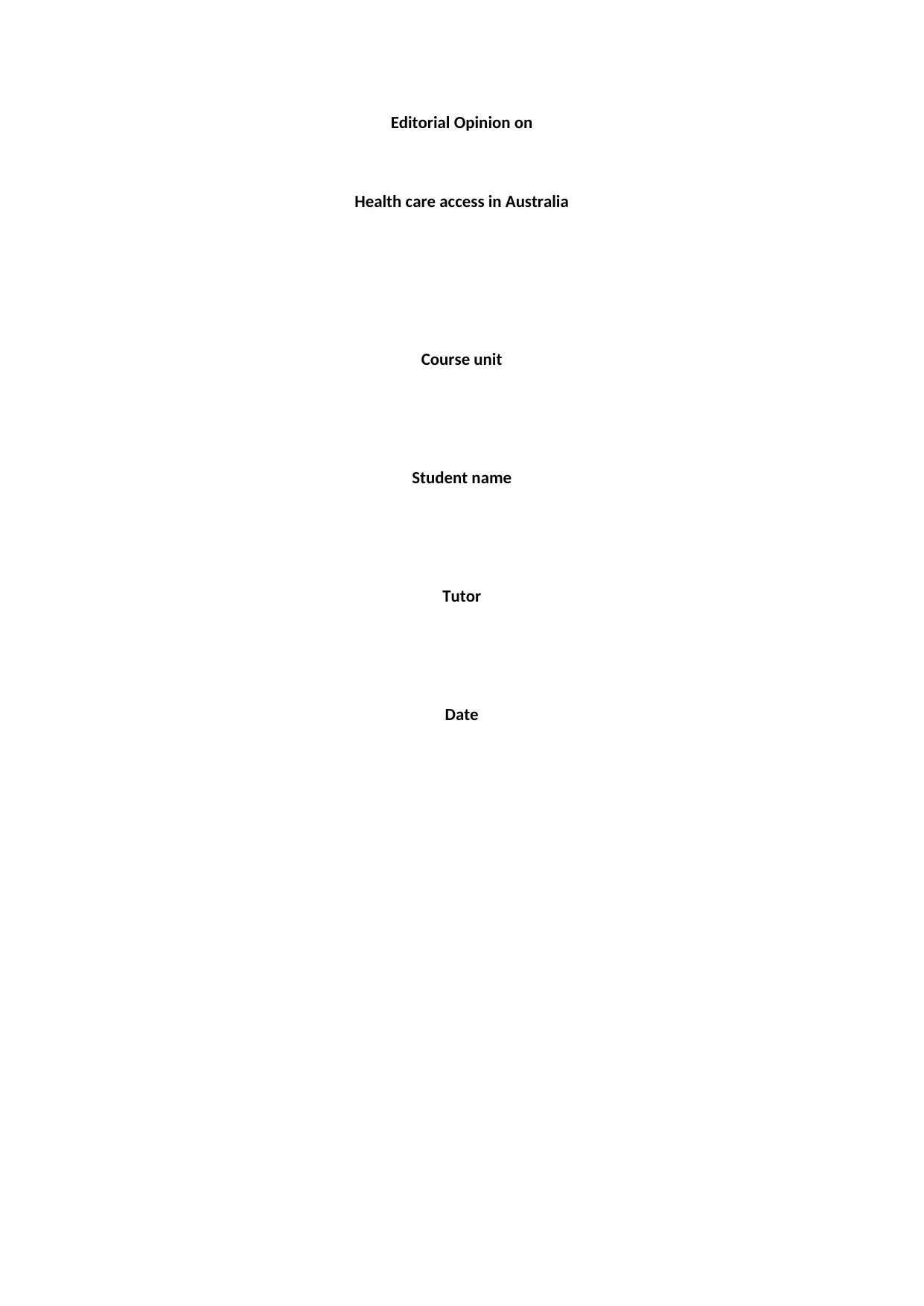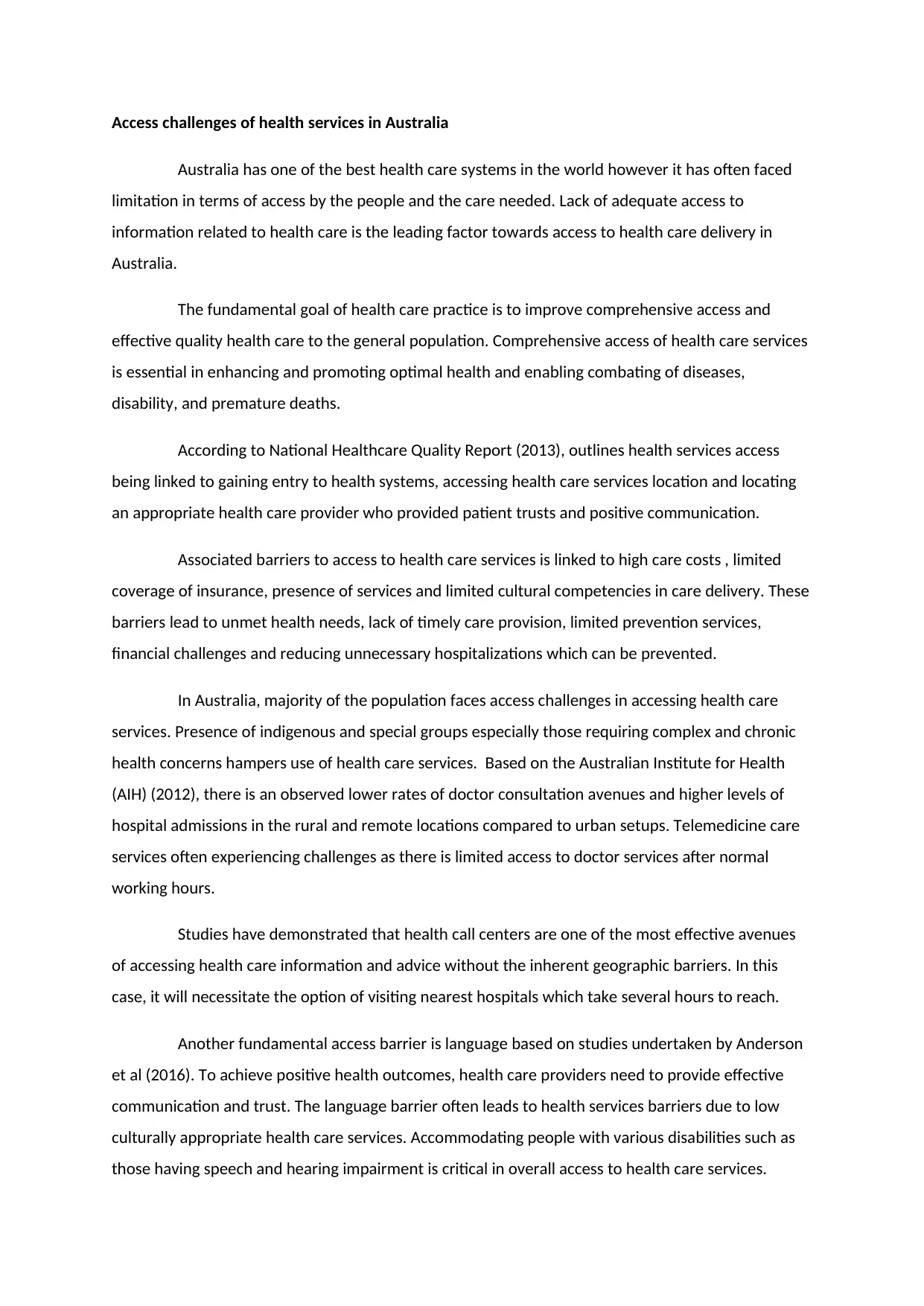UNCC100 Assignment 2: Healthcare Access in Australia Editorial Opinion
VerifiedAdded on 2022/10/10
|4
|1016
|52
Report
AI Summary
This report provides an editorial opinion on healthcare access challenges in Australia, focusing on the limitations faced by the population. It highlights the importance of comprehensive access to health services in promoting optimal health and combating diseases, disability, and premature deaths. The report discusses barriers to access, including lack of information, high costs, limited insurance coverage, and cultural competencies. It emphasizes the challenges faced by indigenous and special groups, as well as the impact of geographic location and language barriers. The study also explores the role of telemedicine and digital health services. The report underscores the need for improved health equity, the impact of health inequities and the importance of addressing political, socioeconomic, and environmental factors. It concludes by emphasizing the critical role of healthcare providers in addressing the barriers and improving access to health services for the general population, as well as the need for increased avenues for accessing positive health care services and the importance of nursing in this context.
1 out of 4











![[object Object]](/_next/static/media/star-bottom.7253800d.svg)